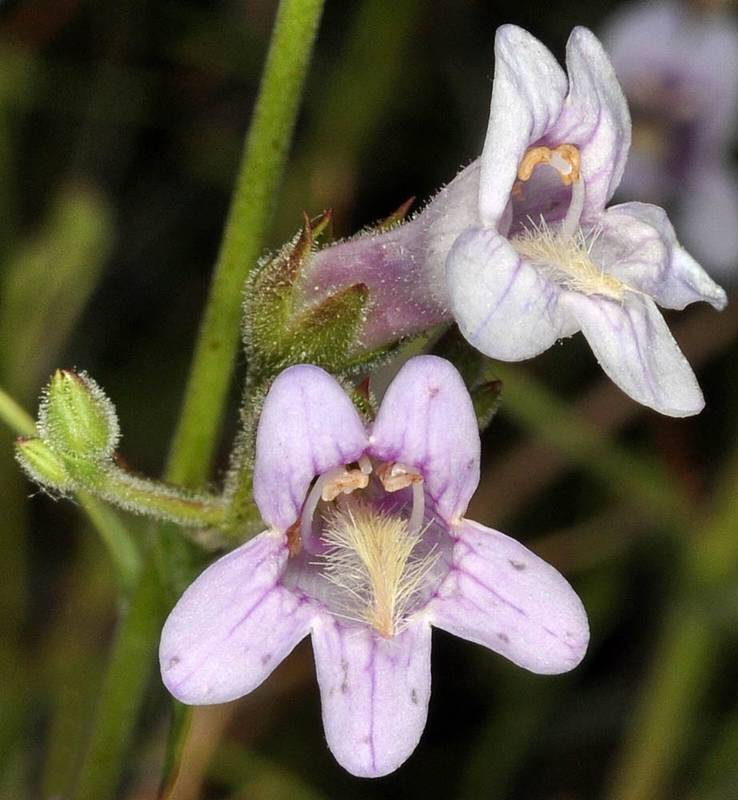Penstemon cardwellii
Penstemon triphyllus
Cardwell's beardtongue
whorled beardtongue
Leaves opposite, glabrous, the largest on short, sterile shoots, serrulate or nearly entire, short-petiolate, the blades elliptic, 1.5-3.5 cm. long and 6-14 mm. wide;
leaves of the flowering shoots less crowded, smaller, sessile and entire.
Leaves irregularly arranged, many ternate or whorled, others opposite or single, glabrous or puberulent, all cauline, the lowermost reduced, the others numerous, sessile from a narrow base, linear or narrowly lance-elliptic, up to 5 cm. long and 1 cm. wide, irregularly and sharply toothed.
Inflorescence racemose, few-flowered and crowded, glandular, the simple pedicels opposite and axillary;
calyx 5-12 mm. long, the 5 segments thin and lanceolate;
corolla bright purple to deep blue-violet, 30-38 mm. long, about 1 cm. wide at the mouth, keeled on the back, glabrous outside and with long, white hairs near the base of the lower lip within;
anthers long-wooly, pollen sacs opposite;
staminode slender, shorter than the 4 fertile filaments, long-bearded toward the tip
Inflorescence a loose panicle, often leafy-bracteate below;
calyx 4-6 mm. long, the 5 segments green or purplish, entire, often unequal;
corolla blue-lavender to light purple-violet, 13-19 mm. long, weakly bilabiate, glandular-hairy outside and glabrous within, the upper lip cleft more than half its length;
anthers 0.9-1.3 mm. long, permanently horseshoe-shaped, the pollen sacs saccate and indehiscent below;
staminode exerted, long-bearded half its length.
Capsule
Capsule 4-6 mm. long



